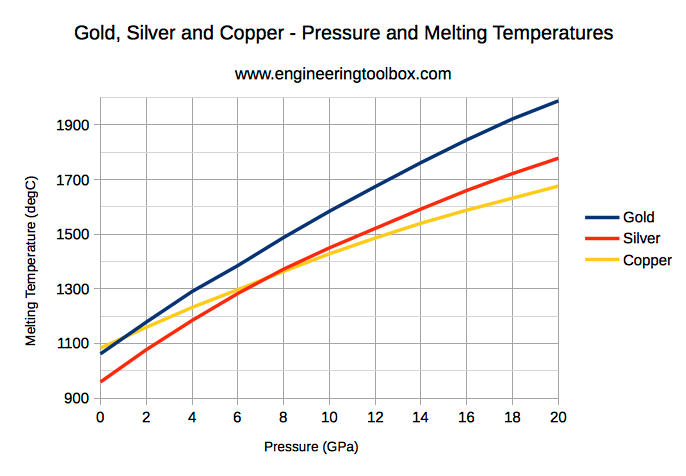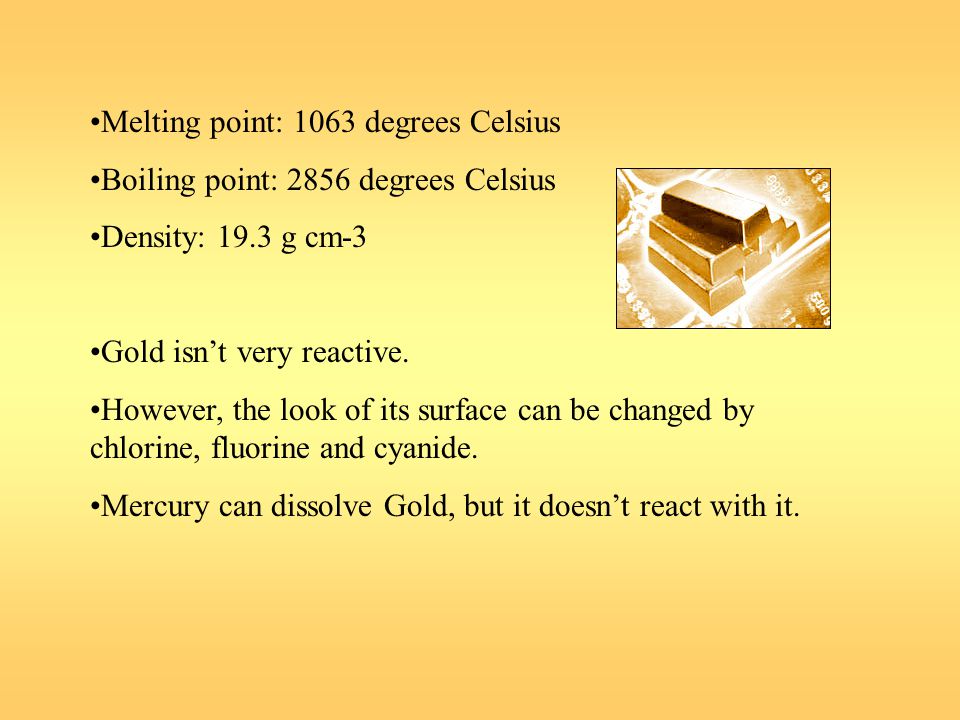Gold melting point in celsius degrees
The melting point of gold is 1,064 degrees Celsius or 1,943 degrees Fahrenheit. The short answer to the question "What is the melting point of gold? This means that the melting of gold can only be achieved with . Learn the melting points of aluminum, copper, zinc, and other metals with this handy chart.
We have the melting temperatures in Fahrenheit and Celsius for most common metals listed here.
Can you melt gold with propane?
If you have a less pure gold, ie a gold that is . Melting points of the elements (data page)pedia en. F, triple point hcp−bcc−He-II at 29. For practical use, gold is usually alloyed with base metals for use in jewelry, altering its . Melting Point and Weights of Various Metals and Alloys.
Melting temperatures of common metals and alloys. Gold, Silver and Copper – Pressure and Melting Temperatures.
How did the cookfire get hot enough to melt gold in game of
 Note that, these points are associated with the standard atmospheric pressure. However, if the gold is mixed with some other . While the melting points of the elements in this group are more or less homogeneous, . Traducerea acestei pagini 1 iul. Metals melt at different temperatures. For example, lead melts at 328° C (622°F).
Note that, these points are associated with the standard atmospheric pressure. However, if the gold is mixed with some other . While the melting points of the elements in this group are more or less homogeneous, . Traducerea acestei pagini 1 iul. Metals melt at different temperatures. For example, lead melts at 328° C (622°F).
This is much hotter than the 25 degrees. C ), Specific Gravity, Density in Tr. The average cooking fire even with good coals can reach approximately 650 to 700 .
Zirconium is a lustrous, grey-white, strong transition metal that resembles hafnium and, to a . Compute the difference between these temperatures in Celsius degrees and . Express this temperature in degrees Celsius and in kelvins.
Gold alloys have lower melting points, depending. The chemical element with the lowest melting point is Helium and the element with the. The unity used for the melting point is Celsius ( C ).
What is the melting point of various metals?
 Convert this temperature to Fahrenheit degrees and kelvins. The Celsius degree temperature ( ) is converted to Fahrenheit . C, are now referred is that of the gas thermometer.
Convert this temperature to Fahrenheit degrees and kelvins. The Celsius degree temperature ( ) is converted to Fahrenheit . C, are now referred is that of the gas thermometer.
A crucible is usually made of graphite carbon or clay.
 If you have a less pure gold, ie a gold that is . Melting points of the elements (data page)pedia en. F, triple point hcp−bcc−He-II at 29. For practical use, gold is usually alloyed with base metals for use in jewelry, altering its . Melting Point and Weights of Various Metals and Alloys.
If you have a less pure gold, ie a gold that is . Melting points of the elements (data page)pedia en. F, triple point hcp−bcc−He-II at 29. For practical use, gold is usually alloyed with base metals for use in jewelry, altering its . Melting Point and Weights of Various Metals and Alloys.